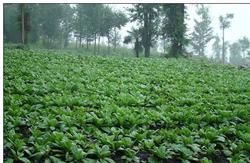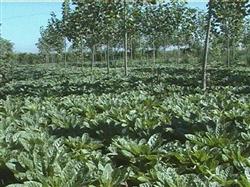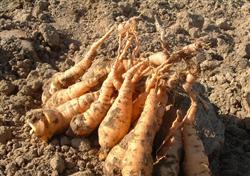What are the management methods for planting Rehmannia glutinosa?

What are the management methods for planting Rehmannia glutinosa? Please guide the management methods of Rehmannia glutinosa planting management is divided into several types, reference as follows: first, field management 1, and time seedling replenishment. When the height of the seedling is 10-12 cm, the seedlings begin to grow, leaving 1 strong seedling in each hole. If there is a lack of plants, they should be replanted in time in cloudy days, and the seedlings should be raised with soil when replanting, so that the survival rate is higher. 2. Ploughing and weeding. The rhizome of Rehmannia glutinosa is shallowly buried in the soil, and the middle tillage should be shallow to avoid root damage. The weeds around the seedlings should be pulled out by hand. After the plants are closed, the middle tillage should be stopped. 3. Topdressing. Rehmannia glutinosa likes fertilizer. In addition to applying sufficient base fertilizer, 100 kg of superphosphate and 30 kg of rotten cake fertilizer are applied per mu after interseedling to promote the development and expansion of rhizome. When the row is closed, fire soil ash is applied once between rows to promote the healthy growth of plants. 4. Irrigation. Rehmannia glutinosa needs a lot of water in the early stage, so it should be watered frequently, and in the later stage, it is the period of underground rhizome expansion, so water should be saved. Attention should be paid to timely drainage in the rainy season to prevent the occurrence of root rot. 5. Except for the string of skin roots. In addition to the main root, Rehmannia glutinosa can also grow slender underground stems along the surface, called string bark roots, which lose a lot of nutrition and should be eradicated in time. 2. Prevention of diseases and insect pests: the diseases of Rehmannia glutinosa are mainly spot blight, ring stripe disease and Fusarium wilt. These diseases generally begin to occur in the first ten days of May and are serious from June to July, so we should pay attention to timely prevention and control; pests include red spiders, ground tigers, grubs and so on. These are treated according to conventional methods, and attention should be paid to avoiding the use of highly toxic pesticides when choosing pesticides. Click to get more planting techniques of Rehmannia glutinosa
- Prev

What are the management points of Rehmannia glutinosa cultivation?
What are the management points of Rehmannia glutinosa cultivation? Please share the introduction of Rehmannia glutinosa planting management for reference: 1, cover grass: after planting and covering soil under Rehmannia glutinosa, cover the border with grass or other crops Artemisia stalk, which can inhibit the growth of weeds and keep the soil loose. 2. Interseedling: 20 murals 30 days after emergence.
- Next

How to harvest Rehmannia glutinosa?
How to harvest Rehmannia glutinosa? Please introduce the method of harvesting Rehmannia glutinosa planted in spring and summer when the plant withered in November of that year. First remove the leaves on the ground, then dig a ditch 35 cm deep at one end of the border, and carefully dig the rhizome in turn. Click to get more planting techniques of Rehmannia glutinosa
Related
- Fuxing push coffee new agricultural production and marketing class: lack of small-scale processing plants
- Jujube rice field leisure farm deep ploughing Yilan for five years to create a space for organic food and play
- Nongyu Farm-A trial of organic papaya for brave women with advanced technology
- Four points for attention in the prevention and control of diseases and insect pests of edible fungi
- How to add nutrient solution to Edible Fungi
- Is there any good way to control edible fungus mites?
- Open Inoculation Technology of Edible Fungi
- Is there any clever way to use fertilizer for edible fungus in winter?
- What agents are used to kill the pathogens of edible fungi in the mushroom shed?
- Rapid drying of Edible Fungi

